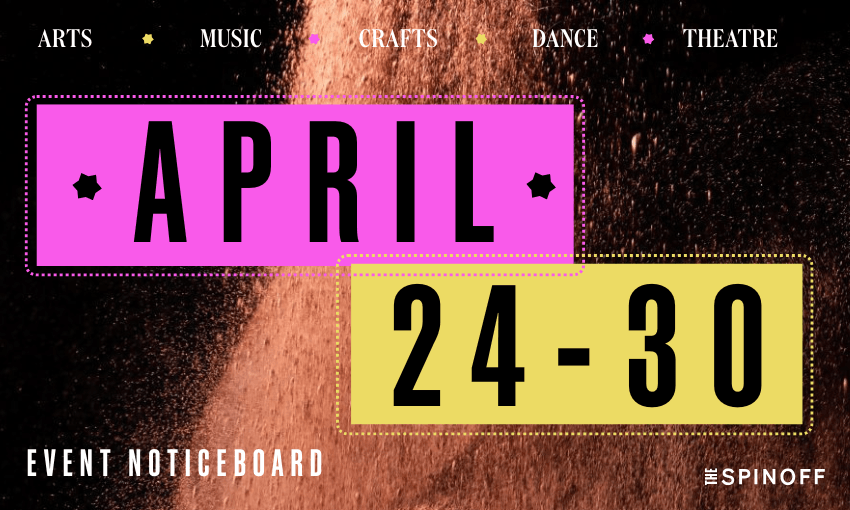The small town on the Kāpiti Coast shines every March with Māoriland.
“We give out gloves with this one,” she said, handing me a pair of blue surgical gloves alongside what I thought would be an ordinary cheeseburger. I shouldn’t have even ordered a cheeseburger given I was standing at the Pepe’s Cafe truck, the famous pie makers from Kenepuru. But here I was, holding an actual bowl (not a cardboard box) with a burger literally swimming in white sauce.
The burger was delicious (as were the cream paua fries we also ordered) and would have been worth the trip into Ōtaki town centre on its own. After we ate, we dropped any food scraps into the compost bin provided and rinsed our dishes at the washing station. We walked out of the kai area, past the “decolonised zone” sign and into Ōtaki’s memorial hall for our first screening at Māoriland 2025.
Māoriland, in its 12th year, has changed what it means to run a film festival. As the largest festival for indigenous storytelling in the world, Māoriland is incomparable, the only similarity with the New Zealand International Film Festival being that it shows films from around the world. Otherwise, it’s a whole new world.
In our first screening, we sat in the bleachers – Ōtaki doesn’t have a cinema so two halls are converted into theatres with stackable chairs and bleachers – alongside about 50 others late on a Thursday night. It felt like the mature, considered version of hanging a sheet up in your lounge to have a “movie experience”. The movie, Aberdeen, followed an indigenous climate change refugee struggling through the bureaucracy of the Canadian welfare system. It wasn’t a particularly fun watch, and it felt like a film that could have been made in New Zealand, or Australia, or the United States (you get the idea), but it was warmly received by the audience.
Five hundred metres down the road, hundreds (maybe thousands?) had packed out the converted basketball arena to watch the world premiere of Shrek in te reo Māori. There was a green carpet out the front and a sausage sizzle out the back and it felt like a family barbecue (complimentary).
The next day, we found ourselves in the big cinema – the basketball arena – watching Kneecap with a surprisingly filled out auditorium of at least a few hundred. It was a bigger turnout than I’ve seen at most film festival showings outside of major premieres. Kneecap followed the formation and startling rise of the Irish language rap group by the same name. It had similar themes to Aberdeen – native people fighting to survive and thrive, showcasing the beauty and vitality of indigenous languages, and a “fuck you” attitude from its protagonists – but unlike Aberdeen it was pumped with humour and a real sense of optimism and excitement for the future despite the struggles it depicted. I walked back out into the sunny evening feeling like I’d seen a fresh new way to tell Indigenous stories.
The next day was not for movies, it was for everything else Māoriland offers. I walked through the art exhibition at the Māoriland hub, admiring works of all mediums from a range of artists. There were books, kete, paintings, pounamu, sculpture and an entire pop-up store dedicated to Māori-designed clothing and merch. My walk through the hub was soundtracked by a panel discussion with local directors, sharing advice on navigating a film funding and distribution system that can feel at odds with indigenous storytelling.
Next door to the hub was a cafe, nearly overrun the entire weekend with the influx of visitors and the op shops dotted along the main road were humming. After the festival, organisers released the data showing record numbers this year – ticket sales doubled compared to 2024 and there was a 50% increase in audience numbers across the week.
There is a holistic approach to Māoriland that is absent from nearly every other festival in the country. Attendees can buy movie tickets and food, yes, but they can also get to know each other with daily sunrise swims at Ōtaki beach or play a conversation card game together. Each film is personally introduced, and even the clips asking viewers to turn their phones off are bespoke and beautifully crafted. Everything felt intentional and in its place.
Ōtaki has always been a thriving bi-cultural town, with Te Wānaga o Raukawa complex going from strength to strength. But with the expressway recently bypassing Ōtaki altogether, the number New Zealanders passing through is now a fraction of what it once was. Ōtaki is no longer a through-town on the biggest highway in the country. Instead, it will have to become a destination, a reason to take a break and stay a while.
With Māoriland, it has absolutely succeeded.


